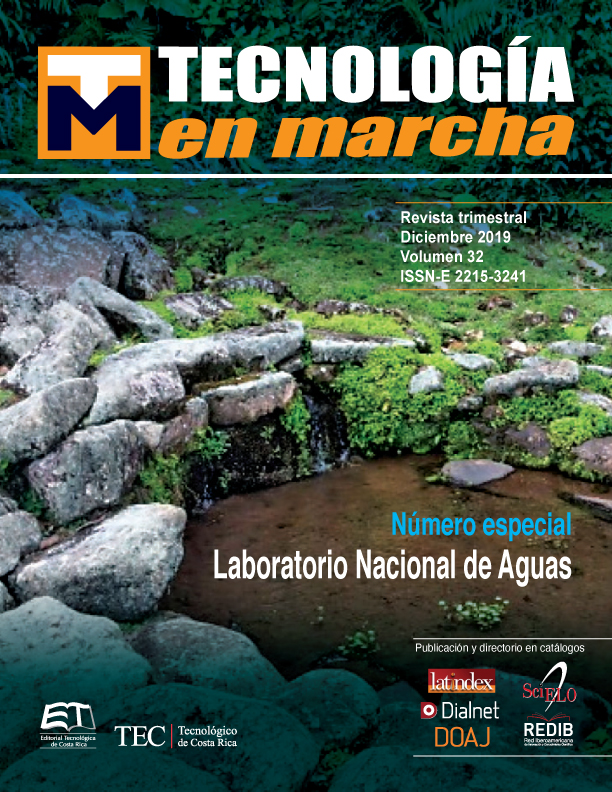Drinking-water quality estimation in health centres in Costa Rica 2017
Main Article Content
Abstract
This study pretends to estimate drinking-water coverage, supplied in Costa Rica’s healthcare centers in 2017. The main objective is to establish the baseline data that allow proposing goals for the years 2022 and 2030 within of the Sustainable Development Goal 6: Clean Water and Sanitation. To comply with it, the following methodology was applied: first, it was described the organization of social security healthcare centers. Second, drinking-water at healthcare centers was evaluated through costa rican regulation, wich establishes microbiological parameters as fecal coliforms, Escherichia coli, Pseudomonas aeruginosa and Heterotrophic Plate Count. Then, “Ladder for drinking-water” (Programme for Water Supply, Sanitation and Hygiene, OMS/ UNICEF) was applied, based on water quality data for 2017 at the supply source water and supply network. The results of microbiological and residual chlorine analysis shows that 97% of supply source water in healthcare centers and 87.5 % of the supply network are provided with potable water. This results allows to define that 97 % is qualified as “advanced service”, 3 % as “basic service”, 0 % as “limited service” and 0 % “ without service, according to the “Ladder for drinking-water” However, inside hospitals, the results shows that 87.5% is qualified as “advanced service”, and 12.5% as “basic service”. 0% of supply network was qualified as “limited service” and “no service”.
Article Details
Los autores conservan los derechos de autor y ceden a la revista el derecho de la primera publicación y pueda editarlo, reproducirlo, distribuirlo, exhibirlo y comunicarlo en el país y en el extranjero mediante medios impresos y electrónicos. Asimismo, asumen el compromiso sobre cualquier litigio o reclamación relacionada con derechos de propiedad intelectual, exonerando de responsabilidad a la Editorial Tecnológica de Costa Rica. Además, se establece que los autores pueden realizar otros acuerdos contractuales independientes y adicionales para la distribución no exclusiva de la versión del artículo publicado en esta revista (p. ej., incluirlo en un repositorio institucional o publicarlo en un libro) siempre que indiquen claramente que el trabajo se publicó por primera vez en esta revista.

